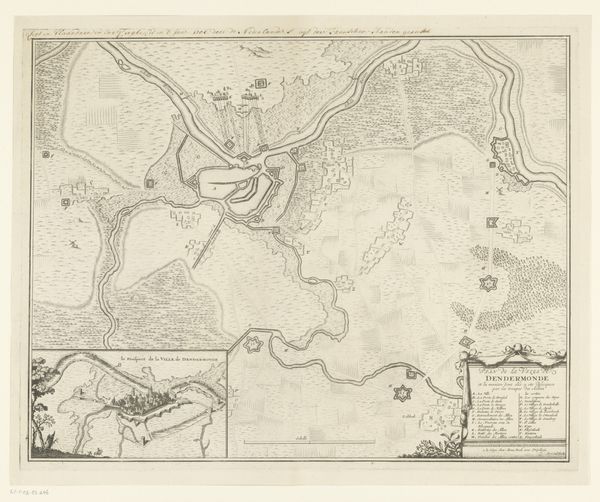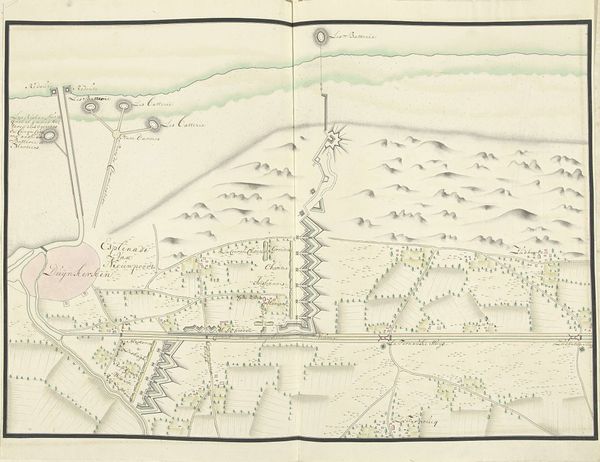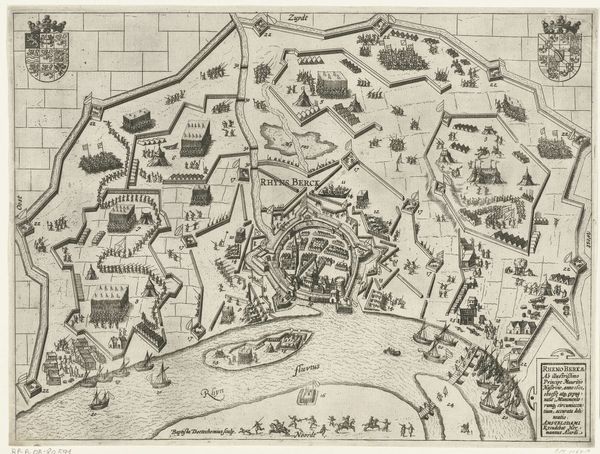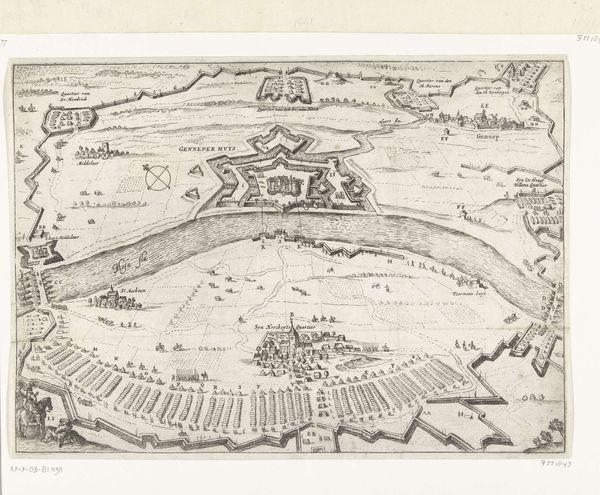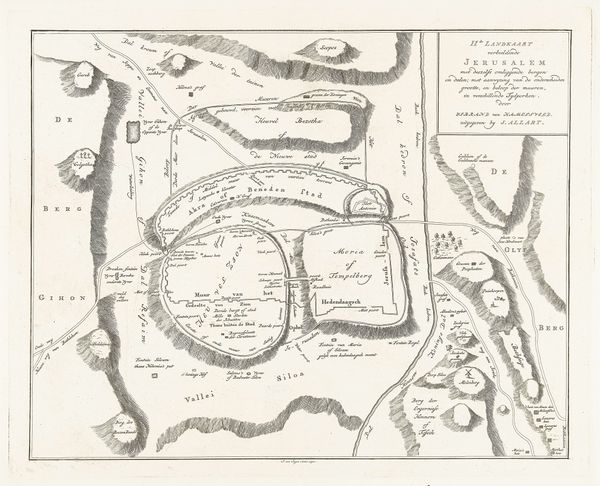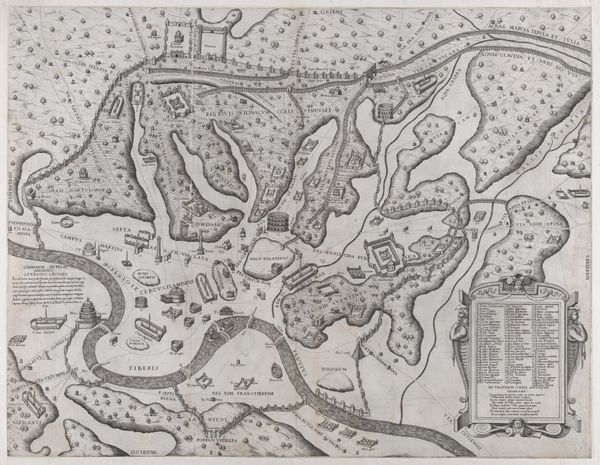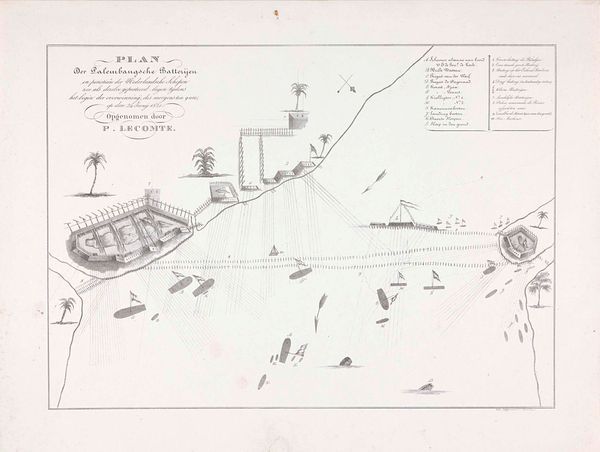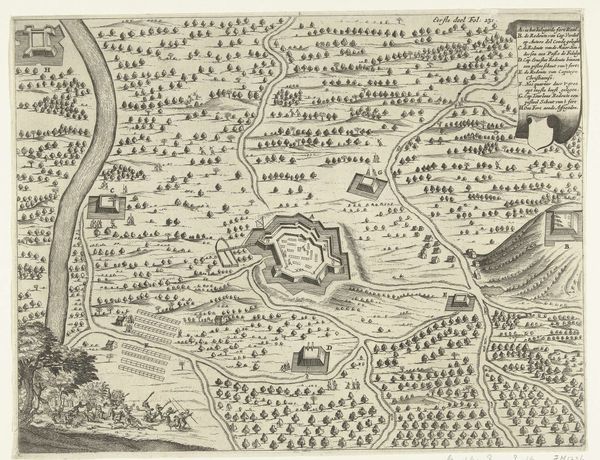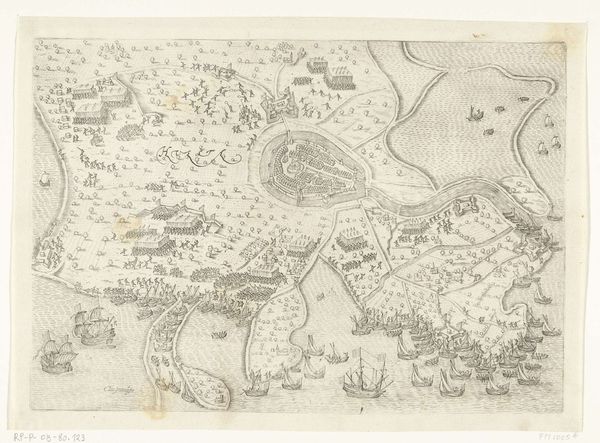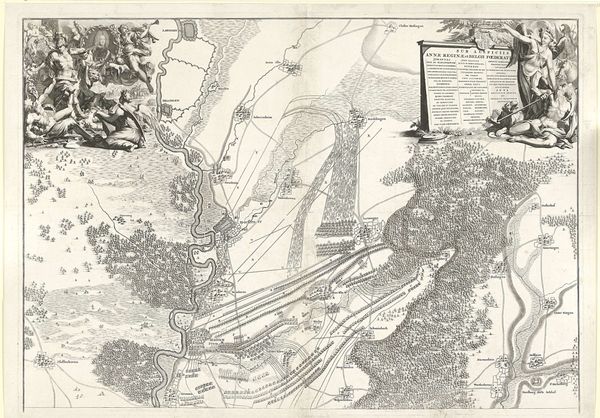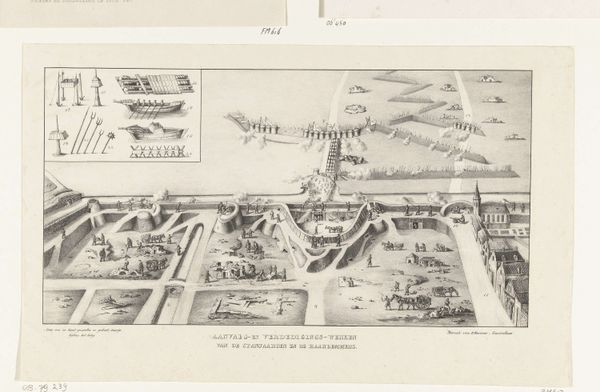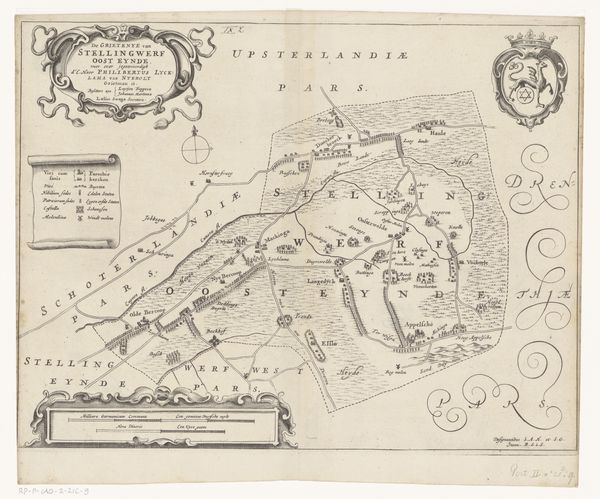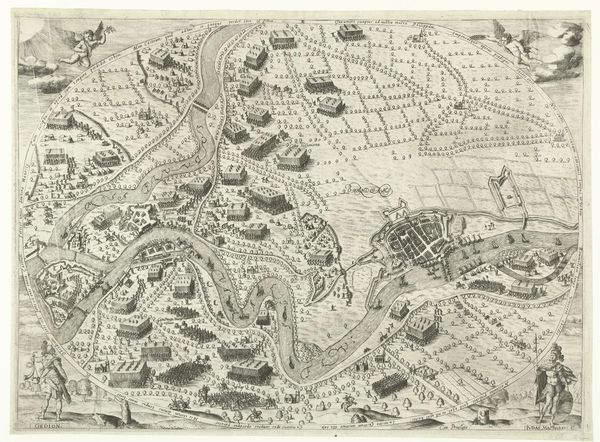
print, etching
#
pen and ink
# print
#
etching
#
landscape
#
etching
#
geometric
#
line
#
history-painting
Dimensions: height 305 mm, width 443 mm
Copyright: Rijks Museum: Open Domain
Curator: This etching by Stefano della Bella, created between 1647 and 1649, depicts the Battle of Hickelsmey near Kempen, which occurred in 1642. It’s a bird’s eye view. What are your first impressions? Editor: I'm immediately struck by the starkness, the monochromatic palette. It conveys a chilling detachment, as if we are viewing the battle not as participants but as clinical observers, almost like military cartography. Curator: That detachment, I think, is part of della Bella's style. It's all about the technical mastery here. Consider the precise, almost obsessive, rendering of the landscape and troop formations. This was produced via etching using pen and ink; what do you notice about the marks? Editor: The linearity is undeniable. Look at the regimented rows of soldiers, the geometrically arranged trees and buildings, creating an order out of chaos. It appears meticulously planned. The density of the lines suggests texture, almost evoking the mud and wear of the battleground. What about its historical production context? Curator: Della Bella's works often documented events and this one serves as propaganda. Consider its date of execution some years after the battle. His patronage was wealthy families, nobility seeking to cement their power and legacies. What the image communicates about power is that control, that meticulous rendering you mention. The production value served power! Editor: Yes, the visual encoding speaks of calculated power! This control serves the function of reinforcing dominance and social hierarchy of its commissioner through representation, while simplifying violence into legible forms. However, the image offers a beautiful compositional clarity, through those receding planes, the distribution of light and shadow and the sheer textural information offered via such limited material. Curator: I agree, formally, the work draws one in. As an object, it bears consideration because its aesthetic qualities are products of particular historical pressures to produce and convey very specific things about warfare in the 17th Century. Editor: Quite right. I find I keep circling back to the image and appreciating its clean presentation. Curator: For me, engaging with an image like this means analyzing how a battle transforms into a controlled visual document. That transition reveals a lot about power. Editor: Indeed, understanding these visual codes help unlock the political and aesthetic functions.
Comments
No comments
Be the first to comment and join the conversation on the ultimate creative platform.
